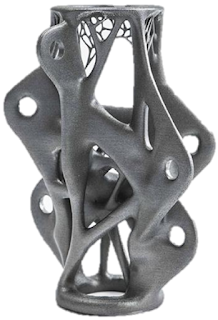FEM: Sequence of static structural analysis on Finite Elements Method
Have ever you asked: what is the sequence of static structural analysis on Finite Elements Method? In this article, we will briefly answer this question:
Are there basically five steps to be followed to do any of
static structural analysis successful.
These
are:
1. Planning: Get all information before
going to CAE software
1.1. Which kind of geometry is enough to simulate:
solid, surfaces or bars? Is the CAD model well generated? Are there gaps
between faces or edges? Are there extra
vertex or edge? How is the transition between body faces. is it smooth and
clean?
1.2. Which kind of analysis is necessary (linear or
nonlinear)?
1.3. What is important to represent on geometry? Do
you need all geometry or only part of it?
1.4. What is the material? Is it available on software library? Do you have all
its necessary properties?
1.5. How does the body works and interacts with the
environment? Is there thermal or flows influences?
1.6. Which are and how are the behavior and its
values of all loadings?
1.7. Which are and how are the behavior of all
supports and connections?
2. Pre-processing: All information that
will support to compute the solution must imputed
at pre-processing step. The analysis quality strongly depends on the quality of
data inputted in this step.
2.1. Choice the analysis type and options.
2.2. Simplify the geometry.
2.3. Choice the material and set its properties and
mechanical behavior.
2.4. Set the boundary conditions: loadings, supports,
and connections.
2.5. Generate and check the mesh quality.
2.6. Add other extra restrictions about how analysis
should calculated.
3. Solution: Solve the problem, normally
called of Black Box, because this is the software internal parameters and there
isn't interaction of user during this step, but some sequences happen during
this step.
3.1. All information of pre-processing is checked
about mistakes.
3.2. If there are errors, it returns to pre-processing
step to user solves them, if not, the
problem is calculated.
4. Post-processing: After the problem has been calculated, the solution should be
translated to visible information, easier and intuitive for the user, in which only
information required by user that will be
shown.
5. Results Analysis:
Some
questions should be asked: Does results make sense? Is it like reality? The convergence was gotten and
the numerical error is admissible?
If there is some inconsistency on the result or
it isn´t satisfactory, it´s necessary to return to pre-processing step and redo
it with better parameters.


Comments
Post a Comment